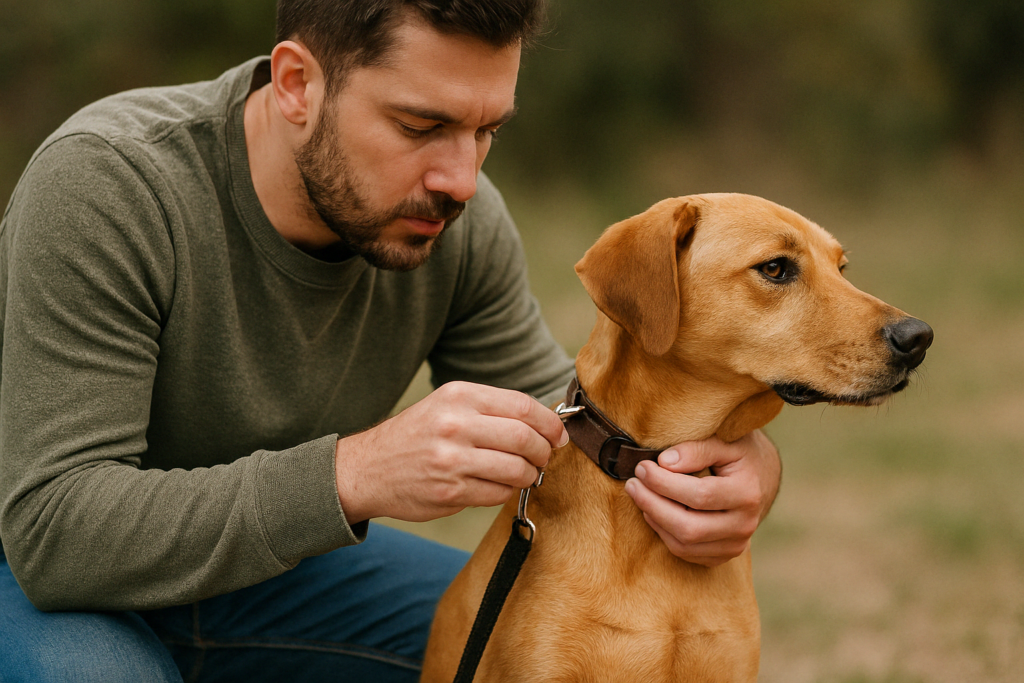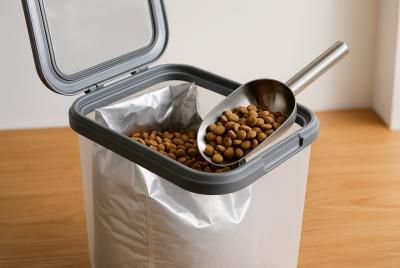How Frequently Should You Take Your Dog for a Walk? + Top 10 Leashes and Collars
We may earn a commission for purchases made using our links. Please see our disclosure for more details.
Walking your dog is not only a regular ritual; it is crucial for your pet’s health. A frequent walk improves the relationship between you and your four-legged companion, regardless of whether you’re a parent with a hectic schedule, a minimalist relishing life’s small joys, or a treehouse enthusiast searching for inventive ways to connect with your pet. Pet owners are aware that quality time and enjoyable outdoor activities are essential components of a balanced lifestyle. In addition to reviewing our top ten leashes and collars that guarantee both style and safety, we’ll go over how frequently you should walk your dog and offer professional advice on how to make your walks interesting.
Introduction
Dogs thrive on routine, exercise, and social interaction. As pet lovers, we often wonder, “How often should we be taking our dogs out for a walk?” The simple answer is that every dog is unique, and their needs vary by age, breed, and temperament. However, a general guideline exists that can help you create a structured schedule. In the next sections, we’ll break down the factors influencing your dog’s exercise needs, suggest the ideal walking frequency, and provide a comprehensive review of the best leashes and collars available today.
If you’re already part of our pet care family, check out our internal guide on dog exercise for additional insights. For more detailed studies, external sites like the American Kennel Club offer excellent resources. Now, let’s dive into understanding what motivates your furry friend to move.

Understanding Your Dog’s Exercise Needs
Before settling on a routine, it is crucial to grasp why exercise matters for your dog. Dogs need physical activity to maintain a healthy weight, keep their muscles strong, and stimulate their mind. When you schedule daily walks, you provide an opportunity for socialization and mental engagement.
The ideal exercise routine depends on multiple factors:
- Breed & Energy Level: High-energy breeds, such as Border Collies or Labrador Retrievers, may need multiple walks or extended playtime. In contrast, older or smaller breeds might be content with shorter, gentler outings.
- Age: Puppies have bursts of energy followed by periods of rest, while senior dogs often appreciate regular but less intense activities.
- Health: Your dog’s overall health and any medical conditions play a significant role. Always check with your veterinarian to tailor the intensity and duration of walks.
- Weather: Extreme temperatures or inclement weather may require adjustments to your dog’s routine.
By understanding your dog’s specific needs, you’ll create a customized plan that fits their lifestyle and ensures their safety and happiness.
How Frequently Should You Take Your Dog for a Walk?
Generally, most dogs benefit from at least two walks per day. However, the total duration can vary:
- Active Dogs: Aim for 60 to 90 minutes of exercise daily, divided into two or three walks.
- Less Active or Senior Dogs: Two shorter walks of about 20–30 minutes each should suffice.
- Puppies: They tend to have short bursts of energy, so multiple brief walks interspersed with playtime help avoid exhaustion.
These guidelines are adaptable. For instance, if you’re a minimalist who prefers quality over quantity, you might opt for one brisk walk paired with engaging playtime in your yard. On the other hand, busy parents might schedule a long morning walk before school and a playful evening stroll afterward. Experimenting with different times and routes not only improves your dog’s fitness but also strengthens your relationship.
Remember, the goal is to maintain consistency and enjoy the time together. In areas of urban living, such as treehouse communities or suburban neighborhoods, safe walking areas are key. Always consider local conditions and your dog’s tolerance. Transitioning between walking times and indoor play enriches your pet’s daily routine and prevents boredom.
Top 10 Leashes and Collars for Your Dog
Selecting the right equipment can transform your dog walks from routine to delightful. The best leashes and collars not only offer comfort and control, they also complement your style whether you are a busy parent or a nature enthusiast.
Recommended Leashes
- Eco-Friendly Nylon Leash:
Durable and lightweight, this leash is perfect for daily adventures. It’s available in various colors and is gentle on both the environment and your dog’s skin. - Retractable Walking Leash:
Ideal for open spaces, this leash provides more freedom during walks while still offering reliable control. Its ergonomic design minimizes strain on your wrist. - Dual Handle Leash:
Great for extra security during busy or crowded outings, the dual handle feature allows you to have quick access to your pet. - Heavy-Duty Reflective Leash:
Perfect for night-time walks, its reflective stitching ensures both you and your dog are visible after dark. Plus, the strong material resists wear and tear. - Bungee Shock Absorber Leash:
Its flexible bungee design absorbs sudden pulls, making walks smoother for both you and your dog, especially for those energetic breeds.
Recommended Collars
- Adjustable Padded Collar:
Comfort is key. This collar adjusts easily while offering a soft, padded interior that reduces friction and irritation. - Martingale Collar:
Ideal for training, the martingale collar prevents slipping out and provides gentle corrective pressure without choking your dog. - Personalized Engraved Collar:
Engrave your contact details and your dog’s name to add a personal touch. It’s both stylish and functional. - Leather Collar with Quick-Release Buckle:
Known for its durability and classic look, this collar stands up to the rigors of daily use while allowing for rapid removal in emergencies. - GPS-Enabled Smart Collar:
For tech-savvy pet lovers, this collar tracks your dog’s activity and location, ensuring you never lose sight of your playful companion.
When choosing your leashes and collars, remember to consider your dog’s size, behavior, and personal style. For more options and in-depth reviews, feel free to explore our detailed product review section. External resources such as consumer review websites and pet supply blogs can also provide helpful insights.
Tips for an Enjoyable Walk
Walking your dog should be a pleasant experience for both of you. Here are some actionable tips to make the most of your outings:
- Plan a Route:
Changing your walking route not only adds variety but also stimulates your dog’s curiosity. Visit local parks, nature trails, or even your neighborhood streets. - Stay Hydrated:
Bring water along, especially on hot days. A portable dog bowl can be very handy. - Reward Good Behavior:
Use praise and treats to reward positive behavior. This builds trust and reinforces training. - Equip for Safety:
Always carry a small first aid kit, consider using a pet car booster seat for safe travel to walking spots, and make sure your dog’s identification is up to date. - Engage Your Senses:
Let your dog sniff and explore their surroundings—it’s a natural way for them to investigate and engage with the environment. - Monitor Your Dog’s Health:
Look out for signs of fatigue or discomfort. If your dog seems tired or overheated, take a break or shorten the walk.
Incorporate these tips into your routine gradually. As you adjust your schedule, you might find that different times of day provide unique opportunities to bond and explore. Moreover, interactive activities like fetch or gentle training exercises during the walk can be a fun addition.
For parents, minimalists, and treehouse fans alike, each walk can become an adventure—a moment to unwind and reconnect amid the chaos of daily life. If you want to read more practical tips, check out our pet care advice section for additional recommendations from pet experts.

What Research Says About Walking Your Dog
Studies show that regular dog walks benefit both pets and their owners. In this study on dog walking and physical activity, researchers found that dogs who are walked daily are healthier and better behaved—and their owners are more active too.
Another review on increasing physical activity through dog walking revealed that owners are more likely to walk their dogs if they believe their pet needs it. This habit improves canine behavior and strengthens the human-animal bond.
Science confirms: daily walks aren’t just a routine—they’re essential.
Conclusion
In summary, determining how often you should walk your dog is largely dependent on their breed, age, and overall health. Yet, maintaining a steady routine of at least two walks per day is generally beneficial. Pair these walks with a carefully chosen leashes and collars that match your dog’s needs, and you’ll pave the way for happy, healthy, and well-exercised pets.
By integrating structured walks into your daily schedule, you not only promote your dog’s physical fitness but also nurture a deeper connection with your furry friend. Whether you’re a busy parent, minimalist, or a treehouse enthusiast with a love for nature, these practices fit seamlessly into your lifestyle. Remember, every step counts, and each walk is an opportunity to create lasting memories.
Ready to upgrade your walk? Visit our pet accessories section for exclusive deals on quality leashes and collars. Also, don’t hesitate to explore further reading on reputable sites like ASPCA for expert pet care guidance.
Frequently Asked Questions (FAQs)
FAQ 1: How long should a typical walk be?
A typical walk lasts anywhere from 20 minutes for less active or senior dogs to over 45 minutes for energetic breeds. The key is to observe your dog’s stamina and adjust accordingly.
FAQ 2: Can my dog benefit from multiple short walks rather than one long walk?
Absolutely. Multiple short walks can help maintain your dog’s energy levels, prevent boredom, and reduce the risk of overheating—especially for puppies. They also provide several opportunities to explore new environments.
FAQ 3: What should I consider when choosing a leash or collar?
When selecting a leash or collar, consider the material, size, adjustability, and additional features (such as reflective stitching or GPS tracking). Comfort for both you and your pet is essential, as is durability to withstand daily use.
FAQ 4: How do weather conditions affect my dog’s walking schedule?
Extreme temperatures or inclement weather may require modifications to your dog’s routine. On very hot days, opt for shorter walks during cooler parts of the day, or consider indoor activities. In winter, dress your dog in a light sweater if needed, and choose safe routes that are free of hazards like ice.
FAQ 5: What are some indoor activities for rainy days?
On rainy days, consider indoor play sessions such as fetch in a hallway, interactive toys, or agility courses using household items. These activities can keep your dog engaged and fit even when outdoor walks aren’t possible.




